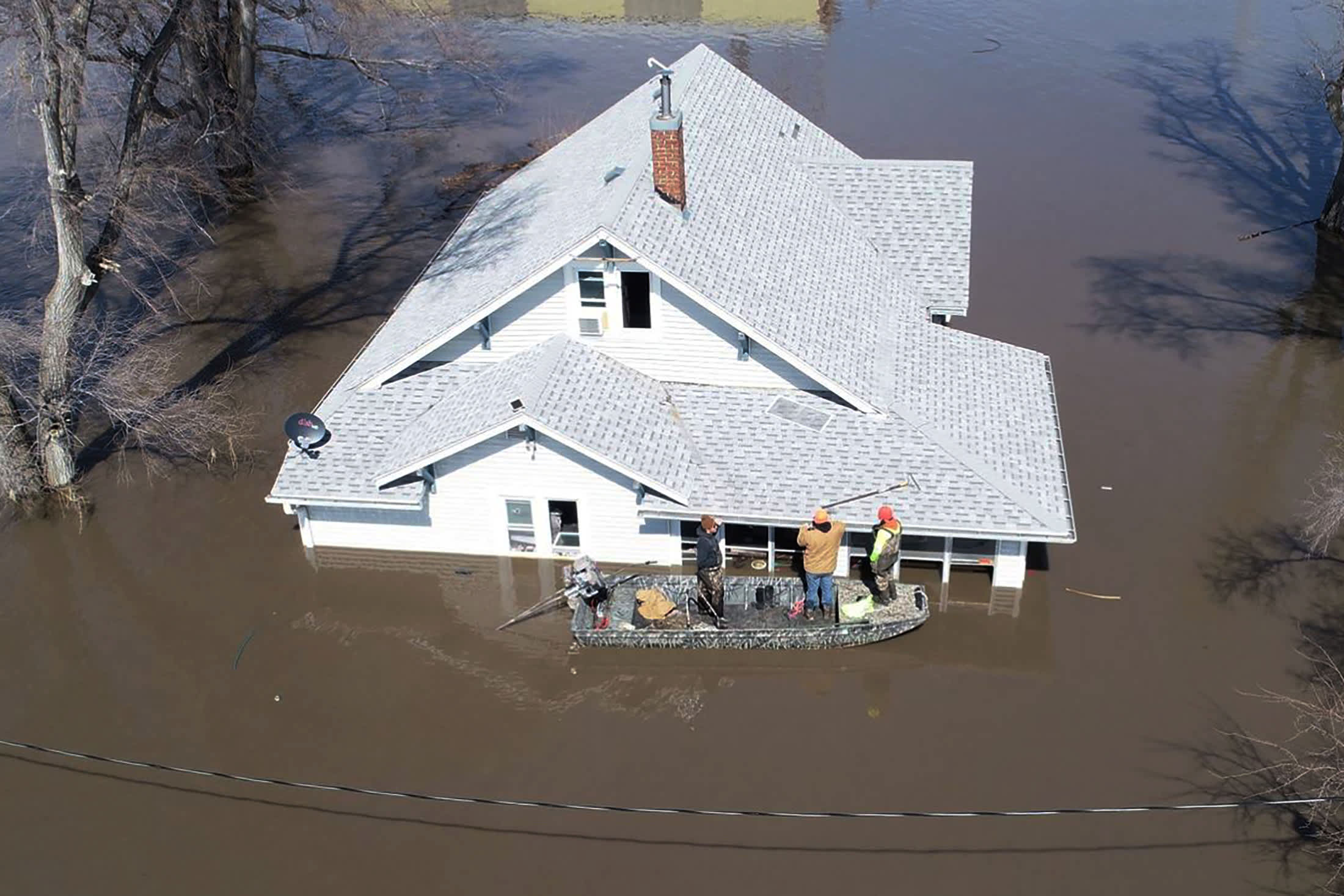This post was originally published on this site

More people could be in danger from rising sea levels than previously thought, a new study says.
The report, published on Tuesday by Nature Communications, found that by the end of the century as many as 630 million people could live on land below projected flood levels. This is three times greater than prior estimates.
Lanni Bailey and a team from Muddy Paws Second Chance Rescue enter a flooded house to pull out several cats during the flooding of the Missouri River near Glenwood, Iowa, March 18.
Passport Aerial Photography | Reuters
In the nearer-term, the study found that 340 million people currently live on land that will be vulnerable to flooding by 2050. Both of these figures are based on extreme conditions, accounting for a rise in greenhouse gas emissions, and include the impact from the melting Antarctic ice sheet. Using more moderate figures for rising sea levels, the numbers for annual flood exposure are 150 million by 2050, and 360 million by 2100.
Scott Kulp and Benjamin Strauss from New Jersey-based science organization Climate Central conducted the research and authored the report.
They found that prior estimates were too optimistic since the numbers relied on data that measured only elevation, and didn’t accurately account for other factors such as tall buildings in densely populated cities.
To paint a clearer picture, Kulp and Strauss relied on LIDAR data, or light detection and ranging information, available in the United States, and then built an algorithm that could extrapolate findings to other data sets and satellite imagery.
“This model incorporates 23 variables, including population and vegetation indices, and was trained using lidar-derived elevation data in the US,” the authors wrote of their algorithm.
The researchers found that more than 70% of the people living on land in danger zones are in eight Asian countries: China, Bangladesh, India, Vietnam, Indonesia, Thailand, the Philippines and Japan.
The study found that 110 million people currently live below high tide levels, with another 250 million on land below annual flood levels. According to prior estimates, the numbers were 28 million and 65 million, respectively.
Some cities have taken steps to protect against flooding.
“Globally at present, levees and seawalls protect low-lying populations in many major deltas, such as around Shanghai, the Netherlands and New Orleans, and in areas experiencing rapid subsidence, such as parts of Jakarta and Tokyo,” the report said.
Of course, these measures do not always end up working, such as when New Orleans was devastated by Hurricane Katrina in 2005.
“Further research on global-scale modeling of the timing, locations, and intensity of migratory responses to increased coastal flooding is urgently needed to minimize the potential human harm caused by such threats,” the study concluded.




